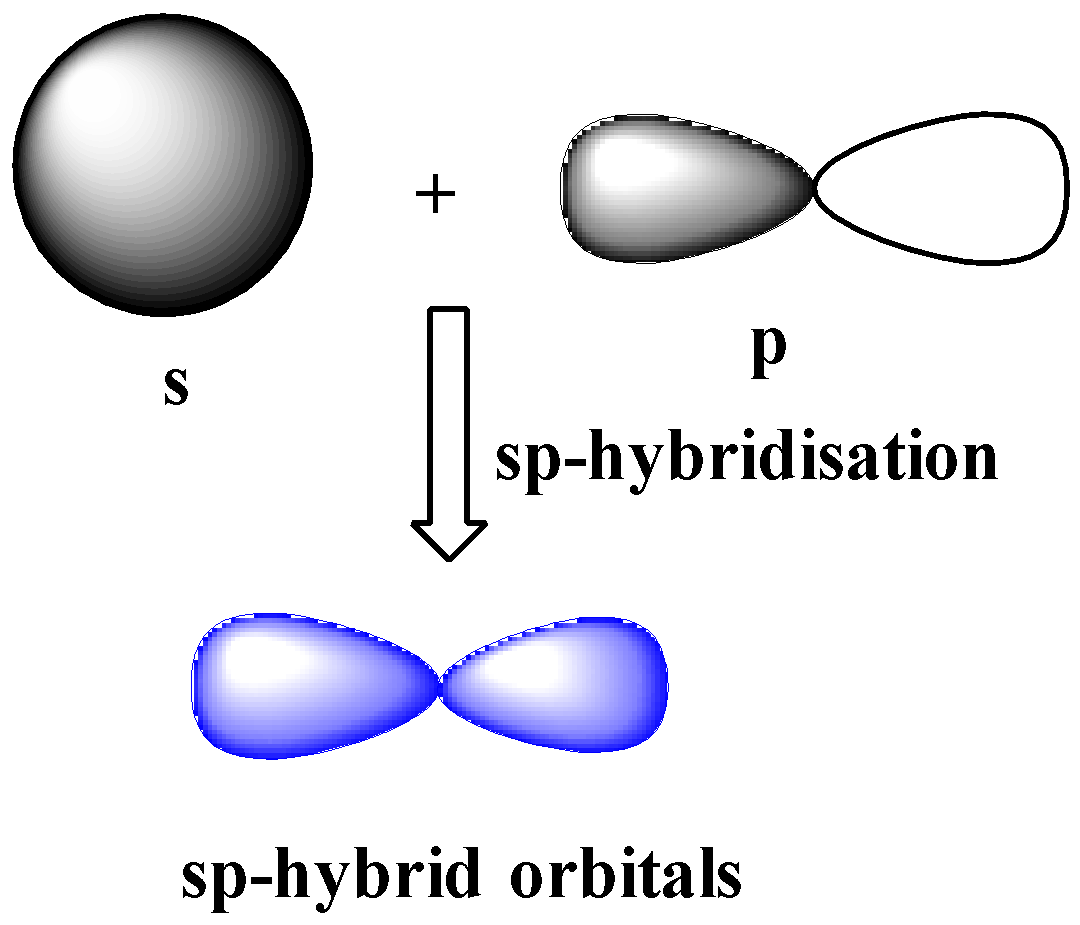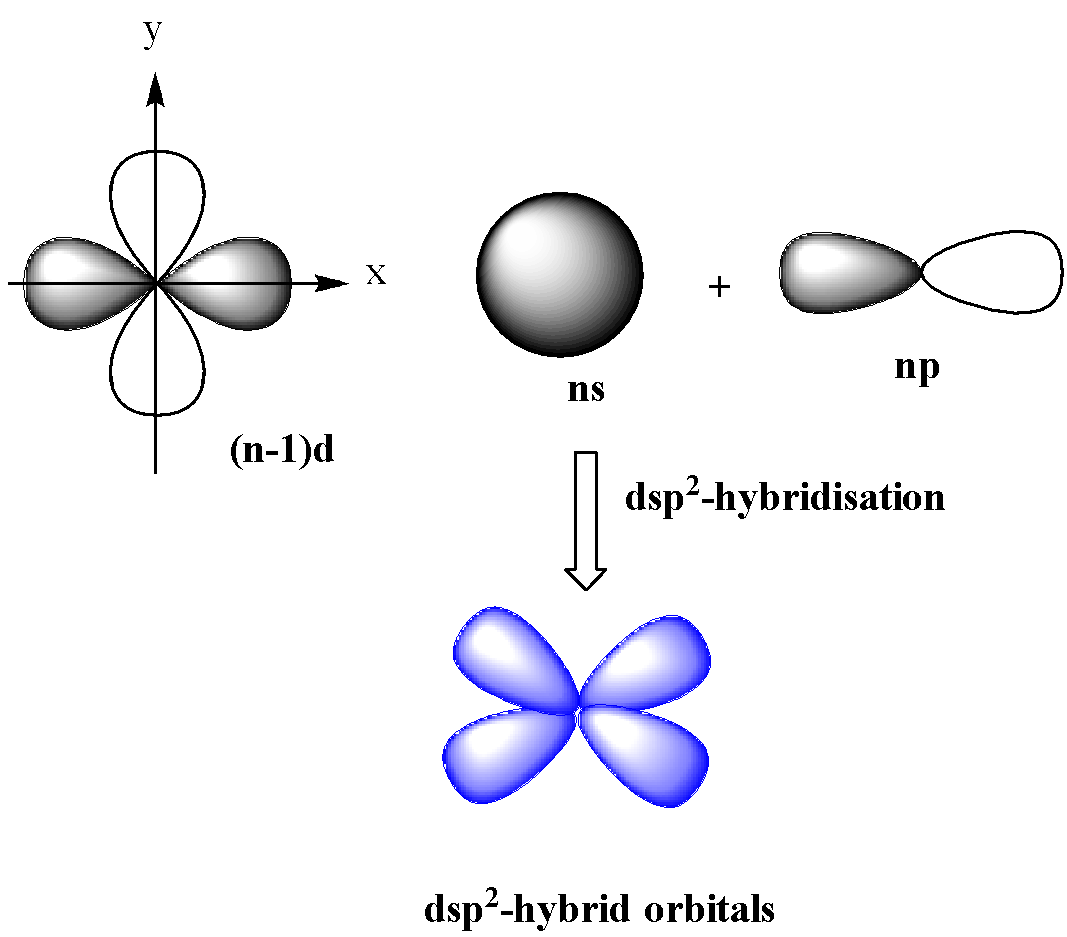
Which hybridization results in non-planar orbitals?
(A)-
(B)-
(C)-
(D)-
Answer
499.5k+ views
Hint: Hybridization is the mixing of atomic orbitals of comparable energies belonging to the same shell, to form new orbitals of equal energy and shape. Angle between the four hybrid orbitals in
Complete answer:
The shapes of molecules can be determined from the type hybridization the molecule is undergoing. Let us now discuss the shapes of the hybrid orbitals resulting from the above given hybridizations.
sp-hybridization
One s and one p orbital of the same shell of an atom combine or hybridize together to form two identical hybrid orbitals. The new hybrid orbitals formed due to hybridization of s and p orbitals are called sp hybrid orbitals.

The new hybrid orbitals formed due to hybridization of s and p orbitals are called sp hybrid orbitals. These orbitals have
When one s and two p orbitals of the same shell mix together to form three orbitals of equal energy and identical shape, the hybridization is

One s and three p-orbitals belong to the same shell mix together to four new equivalent orbitals.

These orbitals rearranged in a regular tetrahedron making an angle of
In this type of hybridization, one d (

These orbitals are in the same plane having an angle of
Based on the above discussion, we can see that
So, the correct answer is “Option C”.
Note: Do not confuse yourself between
Complete answer:
The shapes of molecules can be determined from the type hybridization the molecule is undergoing. Let us now discuss the shapes of the hybrid orbitals resulting from the above given hybridizations.
sp-hybridization
One s and one p orbital of the same shell of an atom combine or hybridize together to form two identical hybrid orbitals. The new hybrid orbitals formed due to hybridization of s and p orbitals are called sp hybrid orbitals.

The new hybrid orbitals formed due to hybridization of s and p orbitals are called sp hybrid orbitals. These orbitals have
When one s and two p orbitals of the same shell mix together to form three orbitals of equal energy and identical shape, the hybridization is

One s and three p-orbitals belong to the same shell mix together to four new equivalent orbitals.

These orbitals rearranged in a regular tetrahedron making an angle of
In this type of hybridization, one d (

These orbitals are in the same plane having an angle of
Based on the above discussion, we can see that
So, the correct answer is “Option C”.
Note: Do not confuse yourself between
Recently Updated Pages
Master Class 11 Economics: Engaging Questions & Answers for Success

Master Class 11 Business Studies: Engaging Questions & Answers for Success

Master Class 11 Accountancy: Engaging Questions & Answers for Success

Master Class 11 English: Engaging Questions & Answers for Success

Master Class 11 Computer Science: Engaging Questions & Answers for Success

Master Class 11 Maths: Engaging Questions & Answers for Success

Trending doubts
State and prove Bernoullis theorem class 11 physics CBSE

What are Quantum numbers Explain the quantum number class 11 chemistry CBSE

Write the differences between monocot plants and dicot class 11 biology CBSE

Who built the Grand Trunk Road AChandragupta Maurya class 11 social science CBSE

1 ton equals to A 100 kg B 1000 kg C 10 kg D 10000 class 11 physics CBSE

State the laws of reflection of light




